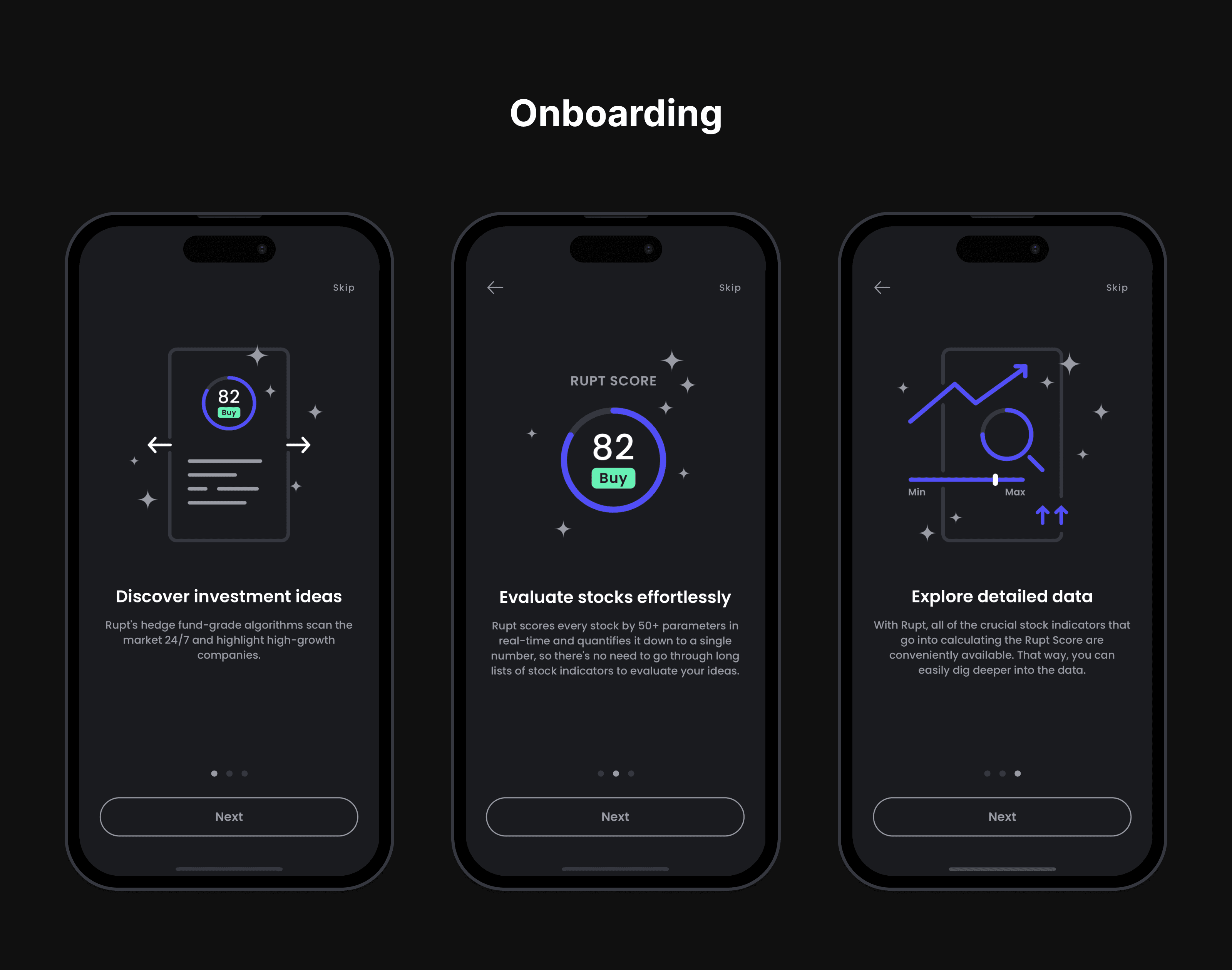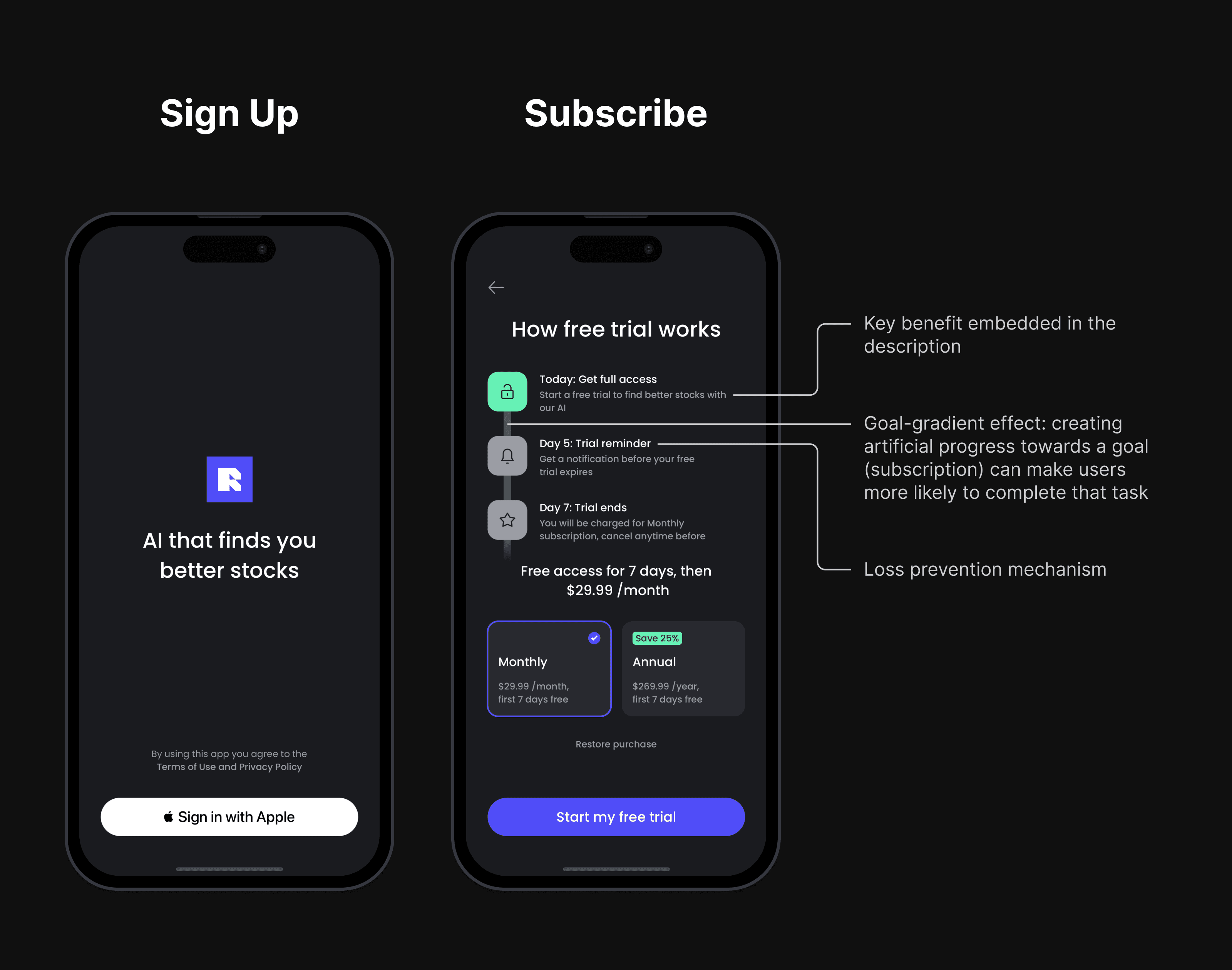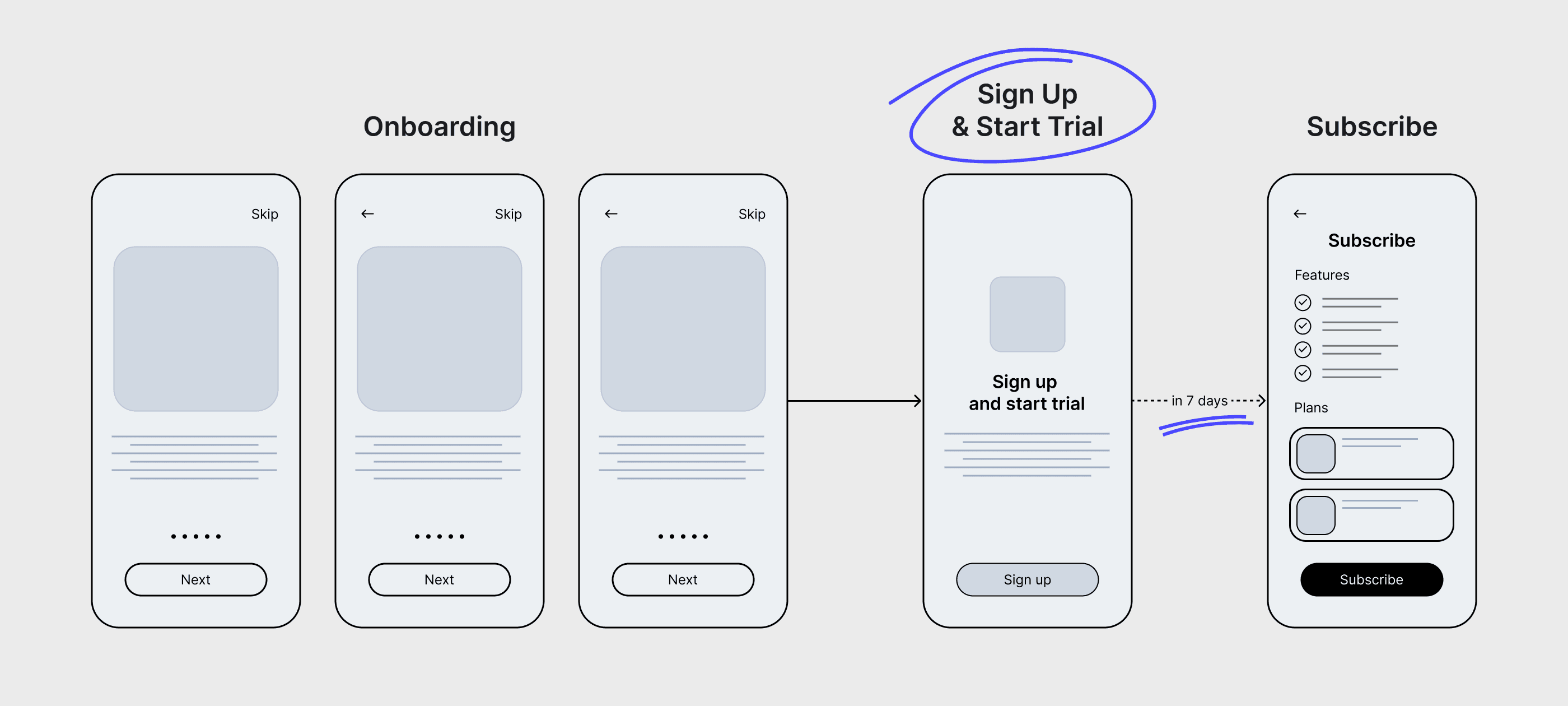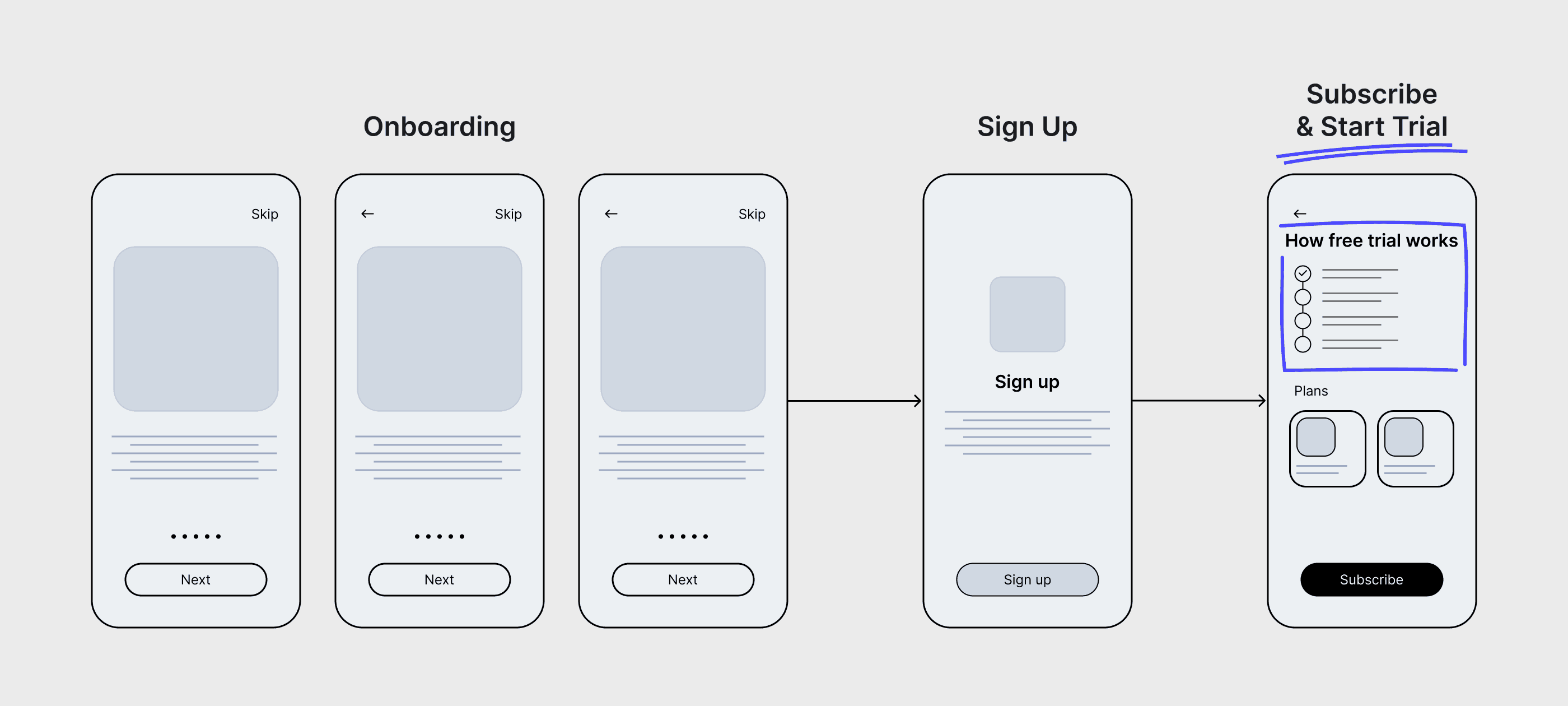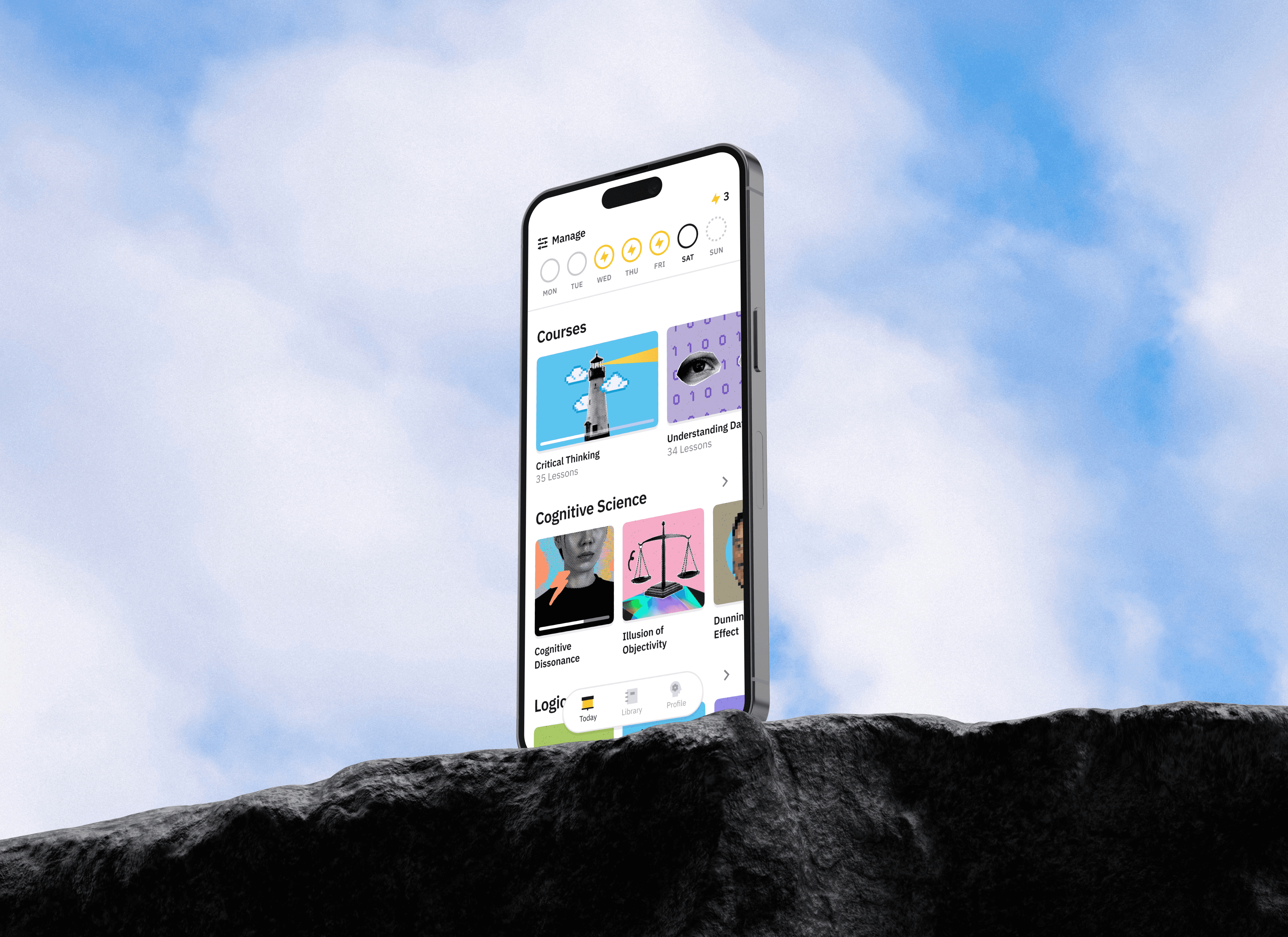Rupt | 2023
Purchase flow optimization for Rupt
Rupt is a stock analysis app for amateur investors, a must-have companion for their Robinhood portfolios. I am a co-founder of Rupt and I've been on the project since day one, helping shape the idea into a reality and seeing it through to launch and beyond.
As a young startup, Rupt is still in the process of optimization of every step of the purchase flow. I created all onboarding, sign-up and subscription screens, and tested different variants to improve end-to-end conversion rate from install to paid subscription.
My role:
UI/UX
I have omitted and obfuscated some confidential information in this case study.
The goal-gradient hypothesis was first proposed by the behaviorist Clark Hull in 1932. It states that people tend to work harder and faster as they get closer to achieving their goal. This effect has been shown to be particularly strong when the goal is specific and meaningful to the individual, and when progress towards the goal is visible and tangible.
The goal-gradient effect can also be observed in situations where progress is artificially created. For instance, a loyalty card that has already been pre-stamped twice out of the required 8 stamps may create a feeling of progress and motivate customers to complete the card faster than an 6-stamp card with no pre-stamps. This demonstrates that even if progress is artificial, it can still influence motivation levels.
Source: Journal of Marketing Research
The challenge
As Rupt is a paid app, I've put a separate thought into the design and optimization of its onboarding and purchase flow. I've tested several hypotheses in order to improve end-to-end conversion rate from install to paid subscription.
Goal: improve end-to-end conversion rate from install to paid subscription.
The baseline
Our baseline flow was as follows: new users completed a short onboarding, signed up with an Apple ID, and then saw a paywall with an opt-out trial. We offered a 7-day free trial and charged automatically at the end of it. Users had to select a plan to access the trial.
Onboarding. We've never had any issues with our onboarding, with ~95% of the users consistently reaching the next Sign up step of the flow. We've A/B tested several versions of onboarding, showing different features and benefits of the product and optimizing underlying texts. The goal of these tests was to understand whether different options of onboarding would impact conversions in subsequent steps of the flow. None of these tests outperformed our baseline, so we kept what we had.
Sign up. After testing a few versions, we've ended up with only one option of signing up via an Apple ID. There were several reasons for that:
Rupt is an iOS-only app, there is no web app or Android version.
It is fast and convenient for the users, the account is created in just two clicks.
It would prevent users from sharing their login and password information, a practice that Netflix has been battling for years.
It prevents users who do not have a valid Apple ID or payment information from starting a trial, therefore the conversion rates from trial to paid customers are more accurate and depend on product factors in our control. This is very important for a startup trying to find product-market fit.
92% of users were able to successfully sign up and create their account.
The problem
We have seen a good conversion rate to paid customers from the users who started the free trial of our product. However, not enough people were starting the trial. Our sign-up-to-trial conversion rates were lower than benchmarks for our category, and this led me to make changes in our purchase flow.
Problem: not enough people were starting the free trial after install.
Test one
I decided to allow users to start using the product immediately after signing up without asking them to select a subscription plan. Therefore, signup and start of the trial became one step. I figured that more people would experience the value of the product and be more likely to subscribe when we showed them a paywall 7 days later.
I saw the opposite result. After a month of testing, we observed a decline in the number of converted customers. After carefully analyzing data at each step of the funnel, I realized that users that have actually tried the product converted to paid customers at the same rate as before, but now much less users were signing up.
When I combined sign-up and trial start into one step, users became reluctant to sign up! Seeing the "Free for 7 days" message and call-to action to start a free trial on the Sign Up screen, they assumed they would be charged on the seventh day of their trial and assumed there was a price they weren't able to see on the screen. This led me to redesign the purchase flow again.
Test two
I realized that with a new app such as ours, people were mostly acting out of a prevention-focused mindset rather than promotion-focused mindset. In other words, they were more focused on avoiding the potential loss of money due to forgotten subscription than they were on receiving future benefits from access to quality stock analysis. Especially that our subscription payment was real, certain, and imminent—while potential benefits from stock analysis were uncertain and deferred into the future. I confirmed this by reaching out to a few potential users.
Prevention-focused mindset of potential users prevailed over promotion-focused mindset.
People who are promotion-focused are goal-oriented and motivated by the rewards they will receive when they achieve their goals. They are eager, work quickly, dream big and think creatively. You might recognize them as people who like to take chances.
People who are prevention-focused see their goals as responsibilities and concentrate on staying safe and maintaining the status quo. They worry about what might go wrong and focus on preventing accidents or mistakes. They are playing not to lose rather than playing to win. They are often more risk-averse, but their work is also more thorough, accurate and carefully considered.
Source: Harvard Business Review
I have used the best practices popularized by the Blinkist app to improve our purchase flow. Specifically, I have changed the trial back to an opt-out option and redesigned the subscription screen to provide clear step-by-step explanations of when the users get access to the app, when and how they will be reminded about the trial expiration, and when they will be charged.
This change increased the end-to-end conversion rate from install to paid subscription by 41% compared to baseline. As expected, the biggest change was in the number of people starting the trial after they sign up with an Apple ID—sign-up-to-trial conversion rate increased by 59%.
Result: 41% increase in end-to-end conversion rate from install to paid subscription.
Another positive impact was an increased opt-in rate for notification messages. People were more willing to subscribe to notifications once they realized that these messages would be used to remind them of the trial's expiration date.

